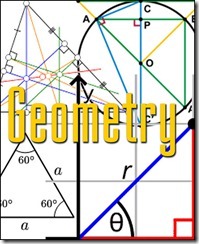The basic tenets of geometry as most people know them were laid out first by the Greek mathematician Euclid about 2,300 years ago. This Euclidean Geometry includes familiar propositions such as the fact that a line can connect two points, that the angles of a triangle always add up to the same total, or that two parallel lines never cross. The ideas are profoundly ingrained in formal education, but what remains a matter of debate is whether the capacity, or intuition, for geometry is present in all peoples regardless of their language or level of education. To that end, Pierre Pica of the National Centre for Scientific Research in France and his colleagues studied an Amazon tribe known as the Mundurucu to investigate their intuitions about geometry.  Tests given to the Mundurucu suggest that our intuitions about geometry are innate. Researchers examined how the Mundurucu think about lines, points and angles, comparing the results with equivalent tests on French and U.S. schoolchildren. The Mundurucu showed comparable understanding, and even outperformed the students on tasks that asked about forms on spherical surfaces. Dr Pica and his colleagues engaged 22 adults and eight children among the Mundurucu in a series of dialogues, presenting situations that built up to questions on geometry. Rather than abstract points on a plane, the team suggested two villages on a notional map, for instance. Similar questions were posed to 30 adults and children in France and the U.S., some as young as five years old. The Mundurucu people's responses to the questions were roughly as accurate as those of the French and U.S. respondents; they seemed to have an intuition about lines and geometric shapes without formal education or even the relevant words. Most surprisingly, the Mundurucu actually outperformed their western counterparts when the tests were moved from a flat surface to that of a sphere (the Mundurucu were presented with a calabash to demonstrate). For example, on a sphere, seemingly parallel lines can in fact cross - a proposition which the Mundurucu guessed far more reliably than the French or U.S. respondents. The study is published in Proceedings of the National Academy of Sciences.
Tests given to the Mundurucu suggest that our intuitions about geometry are innate. Researchers examined how the Mundurucu think about lines, points and angles, comparing the results with equivalent tests on French and U.S. schoolchildren. The Mundurucu showed comparable understanding, and even outperformed the students on tasks that asked about forms on spherical surfaces. Dr Pica and his colleagues engaged 22 adults and eight children among the Mundurucu in a series of dialogues, presenting situations that built up to questions on geometry. Rather than abstract points on a plane, the team suggested two villages on a notional map, for instance. Similar questions were posed to 30 adults and children in France and the U.S., some as young as five years old. The Mundurucu people's responses to the questions were roughly as accurate as those of the French and U.S. respondents; they seemed to have an intuition about lines and geometric shapes without formal education or even the relevant words. Most surprisingly, the Mundurucu actually outperformed their western counterparts when the tests were moved from a flat surface to that of a sphere (the Mundurucu were presented with a calabash to demonstrate). For example, on a sphere, seemingly parallel lines can in fact cross - a proposition which the Mundurucu guessed far more reliably than the French or U.S. respondents. The study is published in Proceedings of the National Academy of Sciences.
May 23, 2011
Subscribe to:
Post Comments (Atom)


No comments:
Post a Comment